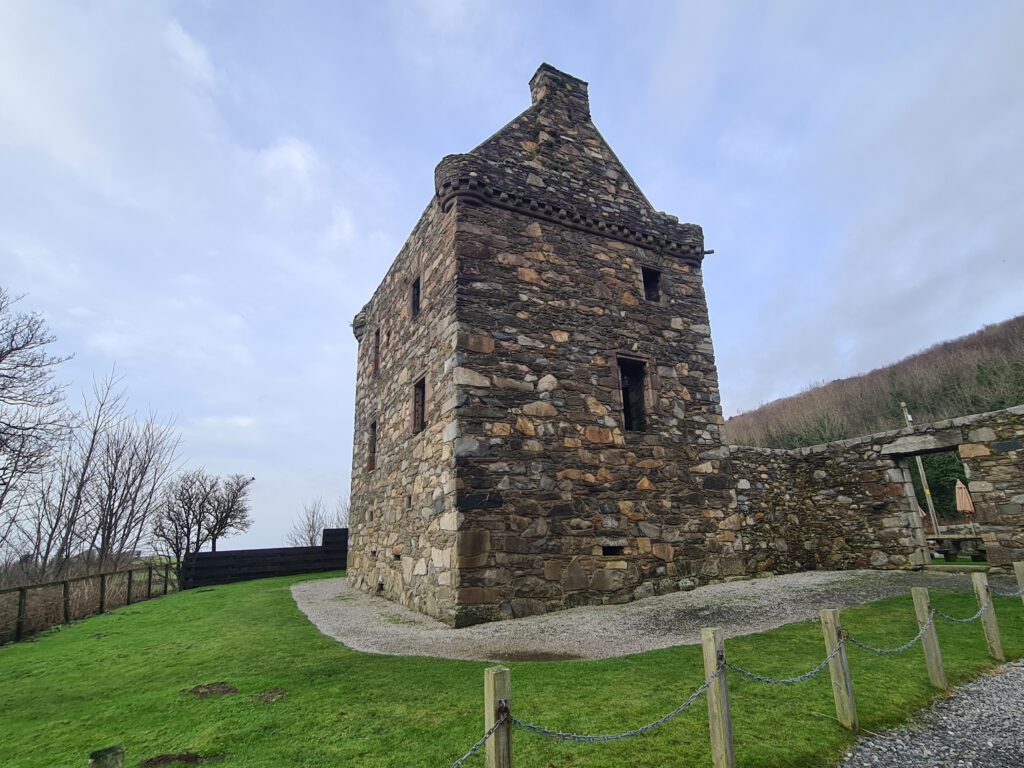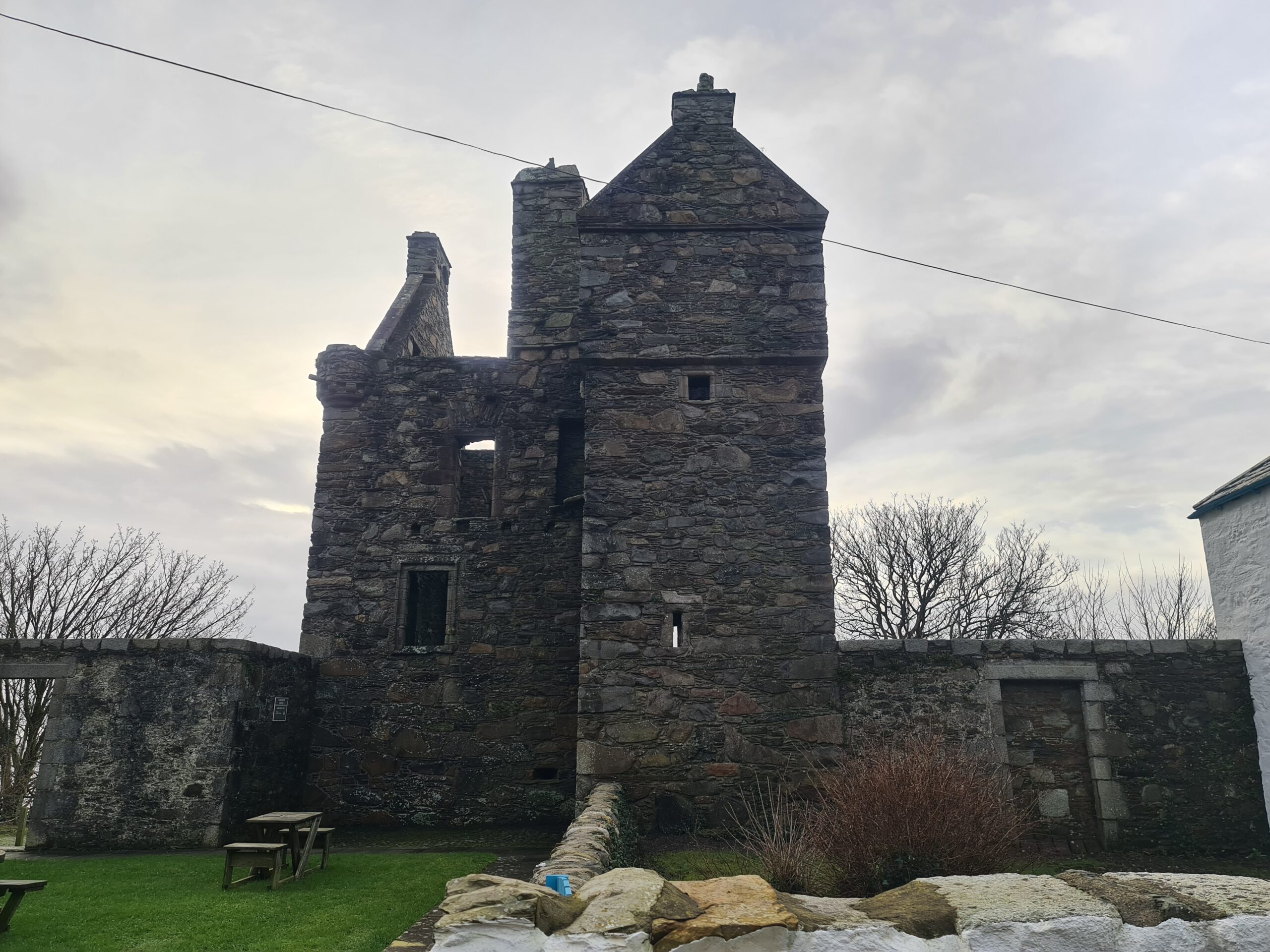Location: Carsluith village, Dumfries & Galloway, Scotland
kind of castle: rectangular tower house
today: open to public
public transport: buses to Carsluith from all over Scotland, e.g. Castle Douglas
scheduled monument: yes
managed by: Historic Environment of Scotland
entrance fee: £ 0
opening times: April to September: daily 9.30 am to 5.30 pm; October to March: 10 am to 4 pm
directions: Carsluith Castle – Google Maps
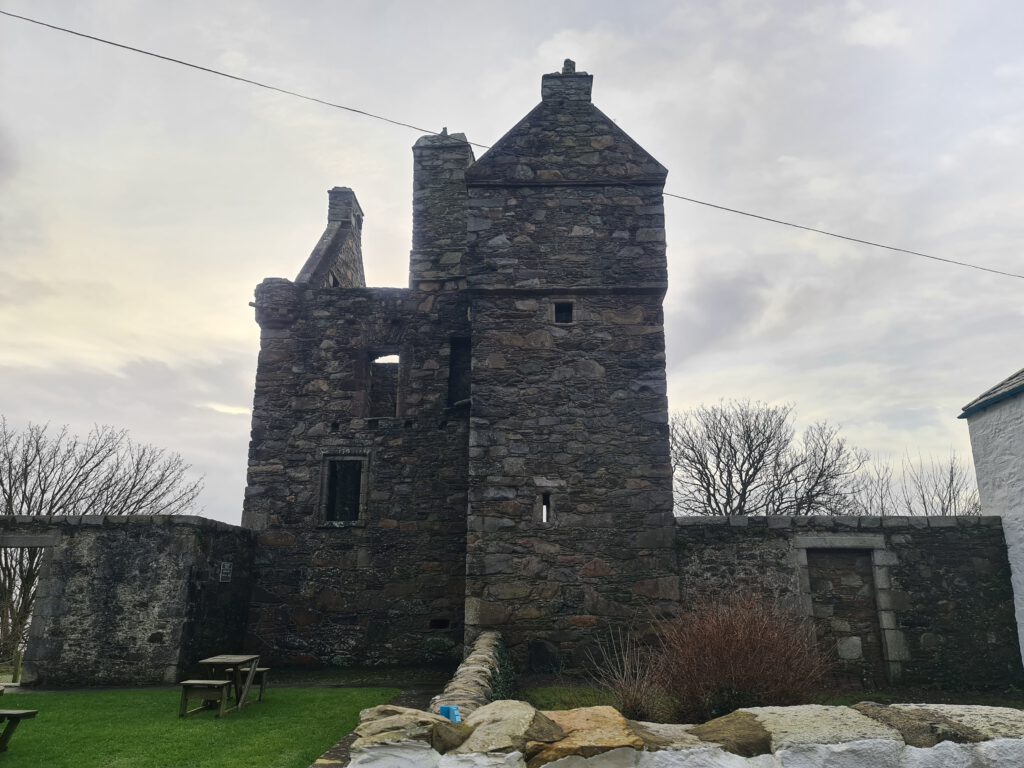
Castluith Castle these days is not much more than a ruined tower house, mostly dating back to the 16th-century, located at Wigtown Bay in Kirkcudbrightshire.
Until 1460 the grounds on which Carsluith Castle is erected belonged to the Cairns family before they passed to the Chamberlain of Galloway, James Lindsay of Fairgirth. James Lindsay might have been the first one to builder of the main tower of Carsluith. Since his son was killed at Flodden the tower passed through his daughter to Richard Brown.
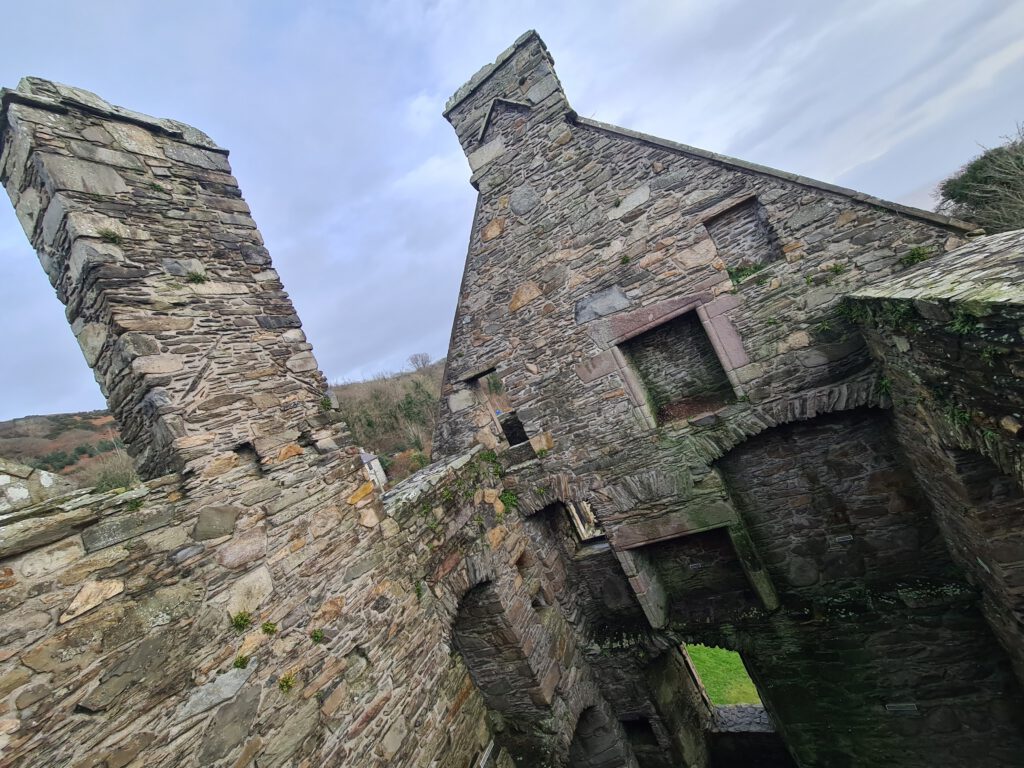
Adding the stair tower to the castle the Brouns were followed by trouble. Being a Roman Catholic family, they feuded with the McCullochs of Barholm, and John was fined when he failed to appear on a charge of murdering the Mc Culloch laird of Barholm.
Gilbert Brown of Carsluith was accused several times that he sheltered Jesuit priests at Carsluith before he was arrested in 1605 and imprisoned in Blackness Castle (Blackness Castle – The Ship That Never Sailed – A scottish World), for his Catholic sympathies.

After being banished to France, he became rector of the Scots College in Paris. Before his arrest he was the last abbot of Sweetheart Abbey, right during the time of the reformation he fortified the abbey and kept on holding catholic mass there despite opposition from the government and the General Assembly of the Church of Scotland, making him the most famous son of Carsluith Castle who like so many other Scots did everything for his/her believes of right and wrong.
In 1748 the Browns of Carsluith emigrated to India, this year is also the year the castle has last been occupied. However, they sold it to the Johnstones, in the early 19th century there were new farm buildings built on to the castle. The castle was given to the State in 1913 from where it passed into the care of Historic Environment of Scotland.
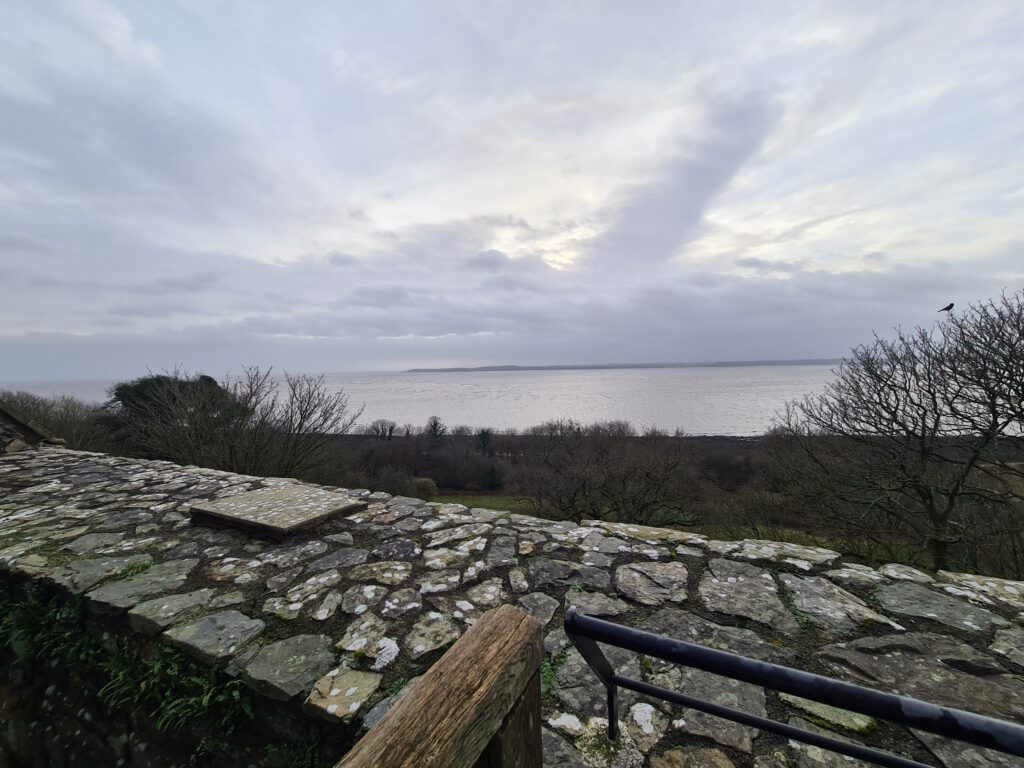
Given many castles dating back to the 16th century it is most likely that between the castle and todays road there might have been a pond or a moat. The maybe most special thing at the castle is, that it doesn’t have a kitchen, the meals would have been prepared in the hall and for bigger feasts maybe in the buildings around the courtyard.
The ruin to this day doesn’t lack of charm. The views onto the ocean over Wigtown Bay are superb and I have heard that there is a small café nearby, which I sadly didn’t have the time to visit during my brief stop at the castle.

It might not impress with its size, but it is old, old and in a good shape, making it worth every trip (especially when visiting nearby Holy Chambered Cairn, post will follow).

